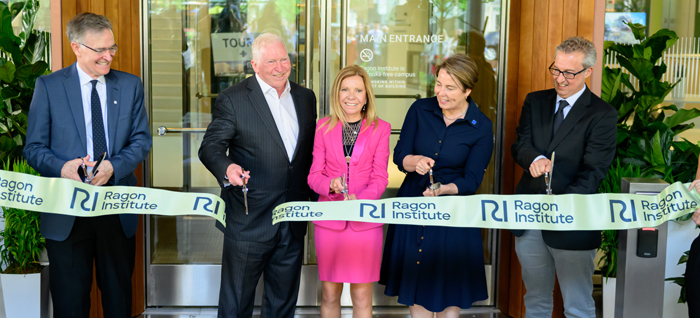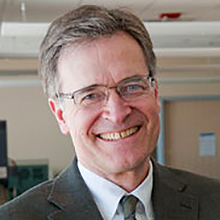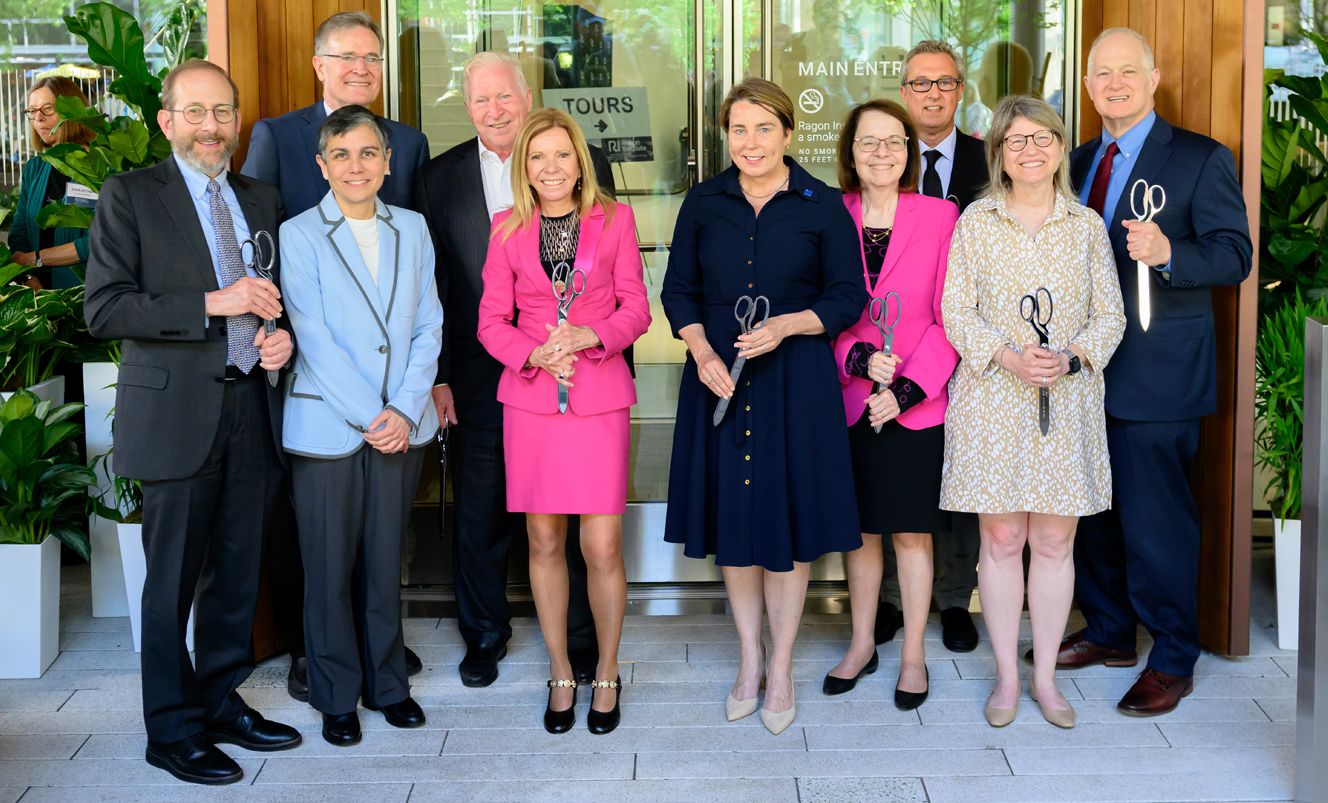On Monday, June 17, the Ragon Institute of Mass General Brigham, MIT and Harvard celebrated its 15th anniversary in historic style: with the grand opening of its new home — a state-of-the-art 323,000 square-foot research building in Kendall Square, Cambridge. Made possible through the philanthropy of Phillip T. (Terry) and Susan Ragon, this transformative facility will enhance the visionary work of the Institute to harness the immune system to prevent and cure human disease.
The opening was marked with an official ribbon cutting ceremony attended by Massachusetts Governor Maura Healey and Terry and Susan Ragon. Also in attendance were Harvard University Interim President Alan Garber, MIT President Sally Kornbluth and former MIT President Susan Hockfield; as well as Mass General Brigham officials, including President and CEO Anne Klibanski, MD, President of Academic Medical Centers David F. M. Brown, MD, President of Massachusetts General Hospital and the Mass General Physicians’ Organization Marcela del Carmen, MD, MPH, and former Mass General President Peter Slavin, MD.

“Today’s celebration marks a historic inflection point for the Ragon Institute, made possible by the vision and support of Terry and Susan Ragon,” said Bruce Walker, MD, the Institute’s director, Howard Hughes Medical Institute investigator, MIT Professor of the Practice of Medicine and Phillip T. and Susan M. Ragon Professor of Medicine at Harvard Medical School. “Most importantly, we are energized and motivated by the global impact the Ragon Institute’s research, enabled by our new home, will have on those who suffer from disease.”
Research is the Fulcrum
The Ragon Institute began with an idea. During a trip to South Africa with Dr. Walker in 2007, Terry Ragon witnessed firsthand the devastating impact HIV was having on the local population, and it affected him profoundly.
“On the way back to the airport, I said to Bruce, ‘you obviously can’t do anything to help this community if you can’t do something about this terrible disease,’” said Mr. Ragon in his remarks at the ribbon cutting ceremony. He went on to share he knew the answer could only be found through research. “If you want to change the world for the better, research is the fulcrum.”
Determined to make a difference, the two developed a fundamental new strategy to combat HIV and other diseases: they would bring together a community of scientists, engineers and clinicians from diverse but related disciplines; provide them flexible funding to rapidly pursue innovative new ideas, and have them focus their efforts on the most important challenges in human disease.

“The fundamental idea was to approach it like the Manhattan Project,” Mr. Ragon said. “Bring the best and brightest people together from lots of different disciplines, give them flexible funding and let them be successful.”
From its earliest conception, the Ragon Institute has been characterized by its deep commitment to catalyzing discovery through collaboration. From its early focus on vaccines, immunotherapy and advancing the basic understanding of how the immune system functions and malfunctions, Ragon Institute investigators have expanded to address influenza, Zika, COVID-19, malaria, autoimmunity and cancer, among other health issues of global concern.
“The new Institute, built on the MIT campus, is within the greatest biomedical ecosystem on the planet here in Cambridge and Boston. With the leadership of our Scientific Director Dr. Facundo Batista, the creativity of our faculty and trainees and the support of our devoted administrative, operational and facilities teams, we will expand our efforts and continue to lead in addressing existing and emerging threats, learning from patients to benefit patients,” said Dr. Walker.
Collaboration by Design
The new building provides more than double the square footage of the Institute’s previous home, allowing for recruitment of additional faculty, more lab and office space, enhanced teaching facilities, one of the largest biosafety containment facilities in the Northeast and an in-house childcare center to support staff who are parents, among other amenities. The additional space will enable the Institute to fully integrate artificial intelligence into its research programs and expand and deepen its collaborative efforts with the biomedical community in Cambridge and around the world.
Traditionally, research spaces are designed to separate the various scientific disciplines. The new Ragon Institute building eschews this “siloed” approach in favor of common spaces that encourage regular interaction between scientists.
“What we’ve done is to create an environment where the incentive is to leave your office and go to common spaces where you can have those chance encounters,” says Dr. Walker. “In my experience, it’s those moments where innovation and creativity are spawned.”
The new space will also make it possible for Dr. Walker and the Ragon Institute team to explore new research areas, such as neurodegenerative diseases and neuroimmunology.

“The cross-disciplinary collaboration that is the hallmark of the Ragon Institute is advancing transformative research and breakthrough science that will impact human health on a global scale,” said Dr. Klibanski prior to the ceremony. “It is the partnership between healthcare and academia that accelerates these breakthroughs and fosters innovation. We are all very grateful to be part of the Institute.”
In addition to supporting academic and medical innovation, the new building was designed with the long-term future in mind. The structure is LEED Gold certified by the U.S. Green Building Council and features outdoor spaces with an array of vegetation, blue roof systems that retain and control water, a green roof and other energy efficient materials and designs. It also will serve as a gathering place for the local community, hosting educational seminars and programs designed to engage underrepresented high school and undergraduate students in medical science and research.
“Today, we launched the next hundred years of the Ragon Institute,” Dr. Walker said. “We are motivated by the belief that every day matters, that our efforts will ultimately alleviate suffering, that we together will succeed. To Terry and Susan, thank you so much for making all of this possible!”
To learn more about how you can support the Ragon Institute and its efforts, contact us.
To watch a video about the history and vision of the Ragon Institute and the ribbon cutting, click here.

